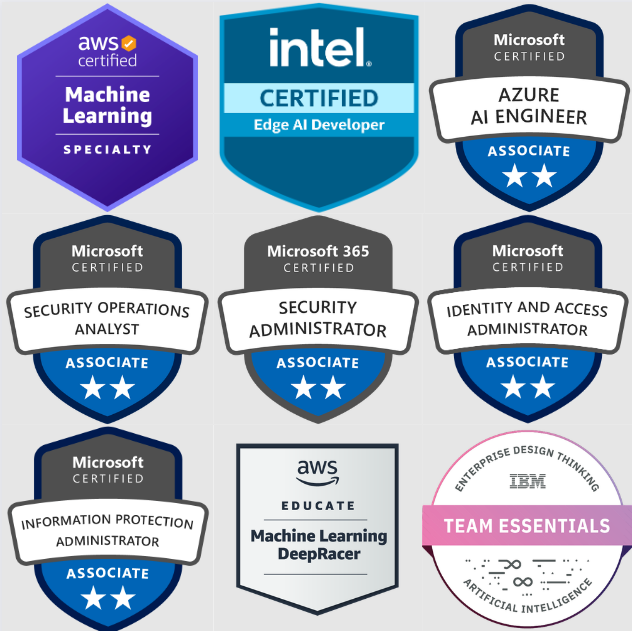| description | cover | coverY | layout | ||||||||||||||||||||||||||
|---|---|---|---|---|---|---|---|---|---|---|---|---|---|---|---|---|---|---|---|---|---|---|---|---|---|---|---|---|---|
Thoughts from the frontiers of (in)Security by Ben Kereopa-Yorke. I work as a Senior Security Specialist with current experience in securing AI/ML systems and building assurance architectures. |
.gitbook/assets/futureisnow.webp |
25 |
|
Some certifications and badges showing my undying enthusiasm for learning and development
“By far, the greatest danger of Artificial Intelligence is that people conclude too early that they understand it.” —Eliezer Yudkowsky
AI and ML security is important because these technologies are increasingly integral to our daily lives, powering everything from healthcare systems and financial services to transportation and national security. As AI and ML systems become more sophisticated, they also become more susceptible to a variety of threats, including data poisoning, model theft, and adversarial attacks. These vulnerabilities can lead to significant risks, such as privacy breaches, biased decision-making, and even physical harm if AI controls critical systems.
Ensuring the security of AI and ML is about safeguarding cognition, economies, data and infrastructure; it's also about protecting the societal and ethical principles that these systems impact. With AI's growing role in decision-making processes, the stakes of security lapses are not just economic or technical but profoundly human.
Making AI and ML security accessible as a skill is equally crucial. As the technology democratises, so should the knowledge and tools to secure it. By equipping a broad base of practitioners, developers, and stakeholders with the necessary skills, we can foster a culture of security that keeps pace with innovation. Accessibility ensures diverse perspectives are included in the security process, leading to more robust and resilient AI/ML systems. We have made a lot of mistakes in traditional information security and cyber security, and we do so again in AI/ML security at our peril.
In this Gitbook I attempt to pass on the knowledge I have both as a practitioner and researcher to guide others in this emerging and critical field. I do not pretend to be the expert, nor the John Connor of the Agentic GPT Age. I am someone who loves to learn, teach, and discuss this field with others.
{% content-ref url="me-myself-and-ai/how-you-can-learn-to-love-skynet.md" %} how-you-can-learn-to-love-skynet.md {% endcontent-ref %}
{% content-ref url="me-myself-and-ai/projects-in-motion.md" %} projects-in-motion.md {% endcontent-ref %}
{% content-ref url="me-myself-and-ai/research-and-publications.md" %} research-and-publications.md {% endcontent-ref %}
{% content-ref url="me-myself-and-ai/teaching.md" %} teaching.md {% endcontent-ref %}
{% content-ref url="me-myself-and-ai/collaboration-wanted.md" %} collaboration-wanted.md {% endcontent-ref %}
{% content-ref url="me-myself-and-ai/conferences-and-speaking.md" %} conferences-and-speaking.md {% endcontent-ref %}
{% content-ref url="broken-reference" %} Broken link {% endcontent-ref %}
{% content-ref url="broken-reference" %} Broken link {% endcontent-ref %}
{% content-ref url="broken-reference" %} Broken link {% endcontent-ref %}
{% content-ref url="broken-reference" %} Broken link {% endcontent-ref %}
{% content-ref url="broken-reference" %} Broken link {% endcontent-ref %}
{% content-ref url="broken-reference" %} Broken link {% endcontent-ref %}
{% content-ref url="broken-reference" %} Broken link {% endcontent-ref %}
{% content-ref url="broken-reference" %} Broken link {% endcontent-ref %}
